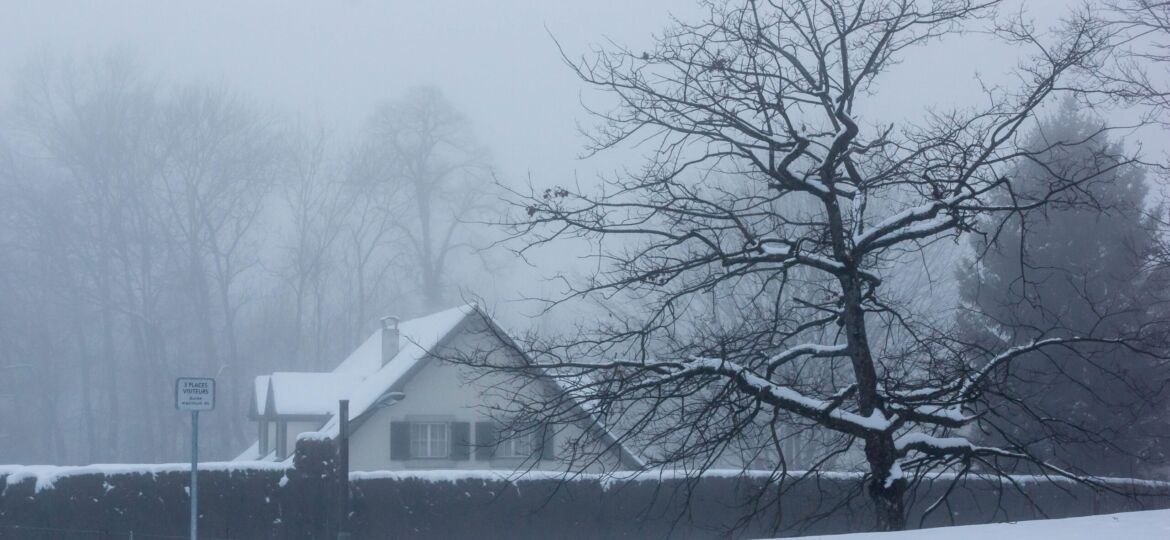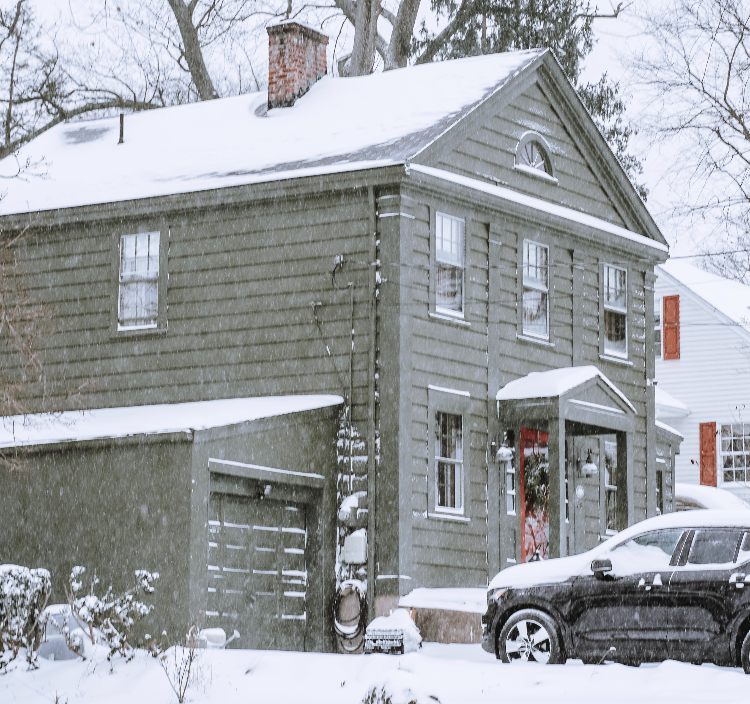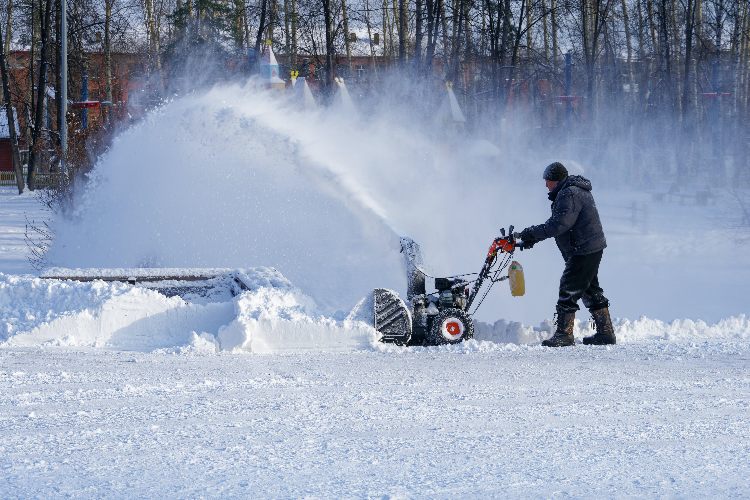

Winter storms here in Columbus can be unforgiving. Creating a warm home for you and your family is our goal as we brace for the cold months. While the winter season here can be fickle, preparing your Columbus home for storms is the best thing to do; you’re better off safe than sorry.
In this article, we explore various ways to winterize your home. These are essential tips to keep your home livable and withstand the blizzards, heavy winds, freezing rain, and extreme cold.


When should I start preparing for winter?
Extreme winter storms can be brutal, leading to power outages, icy roads, loss of communication, and extreme cold. This begs the question of when I should start preparing for winter.
Summer is The best time to prepare your home for the freezing weather. It is impossible to prep your home with the freezing weather outside, so don’t wait until the winter storm kicks in.
Start with major projects like insulating your property and finalizing weatherizing your home during fall. Let’s consider how you can prepare your Columbus home for winter storms.
What Is the Best Way to Prepare Your Columbus Home for Winter Storms?
Frigid winters can lower your immunity, put you at risk of carbon monoxide poisoning, and cause house flooding and accidents. Winterproofing your home aims to provide comfort, keep you healthy, save energy, and improve the value of your property.
Clear the Yard
Winter storms can wreak havoc on the yard, sending loose items flying and felling tree branches. The loose debris and overhanging tree branches can damage your house, and that’s the last thing you want in bad weather. Start preparing for the cold weather by clearing the yard.
First, bring in all the outdoor furniture, grill, summer yard equipment, and outdoor plants. Store the outdoor inventory in the garage or a designated storage space. Once the loose items are inside, start trimming overhanging trees and remove yard debris.
This can be tedious, but we have a solution for you. Get the ideal waste receptacle for yard debris.
Inspect and Repair Your Roof
Winter can take a toll on your roof, creating ice dams, and the leaks can be a nightmare. Inspect your roof for any potential leaks, loose shingles, missing panels, and worn-out rubber around the vent pipes.
Additionally, check for moss or lichen, indicating a decaying roof requiring urgent attention. You can inspect your roof or get an expert to examine it and recommend the best measures.


Clear the Gutters
Cleaning the gutters is another crucial step in winterizing your home. Snow buildup can damage your gutter system if it’s old or low-quality. Remove the leaves and debris on the gutter so it can channel water flow, preventing leaks. You may want to consider replacing the old gutters with new and high-quality ones.
Inspect and Seal Cracks
Don’t overlook cracks; they can worsen, allowing water to flow into your house and damage its foundation and walls. Furthermore, a humid environment is a haven for molds and fungus, which can harm your and your family members’ health. Caulk any gaps, no matter how small they are.
Protect Your Pipes
Another crucial step is protecting your pipes. Plummeting temperatures can damage water pipes, cutting the much-needed water supply. Furthermore, flooding and water damage are imminent with broken water pipes.
The most affected places with the risk of pipe damage are the attic, basement, garage, and those located in the exterior walls. The best measure to keep these pipes safe is to keep the house temperatures at 55° F and above.
Protect Your Windows and Doors
Windows and doors play a crucial role in home insulation. Cracks and loose attachments can cause air leaks, overworking your HVAC system and ultimately driving energy bills. Seal your windows and ensure that your windows can stay locked during winter.
Replace dilapidated windows with storm windows, which provide extra insulation and protection from wind storms.
Replace your door and seal gaps to keep the cold outside. Add a door sweep and weatherstrip it for maximum insulation. Replace or tighten the door hinges, too, to prevent air leaks.
Test-Run The Heating System
Another crucial thing in your weatherproofing process is testing your heating system. This system is vital in providing a warm home so you can enjoy the wintertime. Conduct routine maintenance to ensure it works well during the freezing weather.
Don’t just rely on your electricity-powered heating system. A backup plan in case of power interruption is vital in keeping your house warm. Install an alternative heating system that doesn’t rely on electricity, like a wood stove.
Don’t forget about the furnace. The last thing is to be the 1000th person in the line waiting for repairs in a blizzard.
Install A Carbon and Smoke Detector
Another winter home preparation checklist is installing a carbon and smoke detector. This is especially important if you have a wood stove or a kerosene-powered heater. A battery-powered carbon monoxide detector is essential to prevent poisoning from toxic gases.
Additionally, keep a fire extinguisher close by in case you need it. Check your vent system and ensure it works properly. Remember to stock up on your heating fuel.
Have Snow Removal Equipment Ready
Snow can render your driveway, steps, and sidewalk impassable. Unfortunately, life doesn’t stop when winter comes; you’d still need to go to work and run to Target, Marshalls, or Kohl’s. Snow removal equipment is handy to help clear the pathways.
Buy an ice scrapper and a shovel if you wake up to a blizzard. Another thing is ensuring your snowblower works.
Inspect Your Chimney or Flue
A functional chimney or flue reduces the risk of carbon monoxide poisoning and a massive cloud of smoke in your home. Furthermore, it ensures proper combustion in your stove, providing much-needed warmth.
Look out for soot buildup, excess creosote, damaged flue liners, animal infestation, and other fire hazards. You can hire an expert to be safe.
Have an Emergency Kit
Sometimes, the weather can go from bad to worse; when everything else fails, an emergency winter kit can save the day. Build a disaster kit with essential supplies to get you and your family through the arctic-like temperatures.
Put your emergency kit in an accessible spot at home and ensure everyone knows where it is. Some things to put in this kit include a first aid kit, food, water, prescription medicine, a flashlight, a whistle, tire chains, an ice scrapper, a hand crank radio, extra batteries, and a portable charger.
Have a programmable thermostat
You want to have a consistent temperature during winter to keep your house warm according to your routine. A programmable thermostat is the best thing to have in your Columbus home. You can set the precise temperatures for your home that prioritizes energy efficiency.
Another thing is you can control it remotely, and it has alert settings. You can adjust the settings so it changes the room temperatures according to your routine, saving you money on energy bills during winter.
Stay Alert
The most crucial part of home preparation for winter is staying alert. Follow the weather updates and activate phone alerts.

